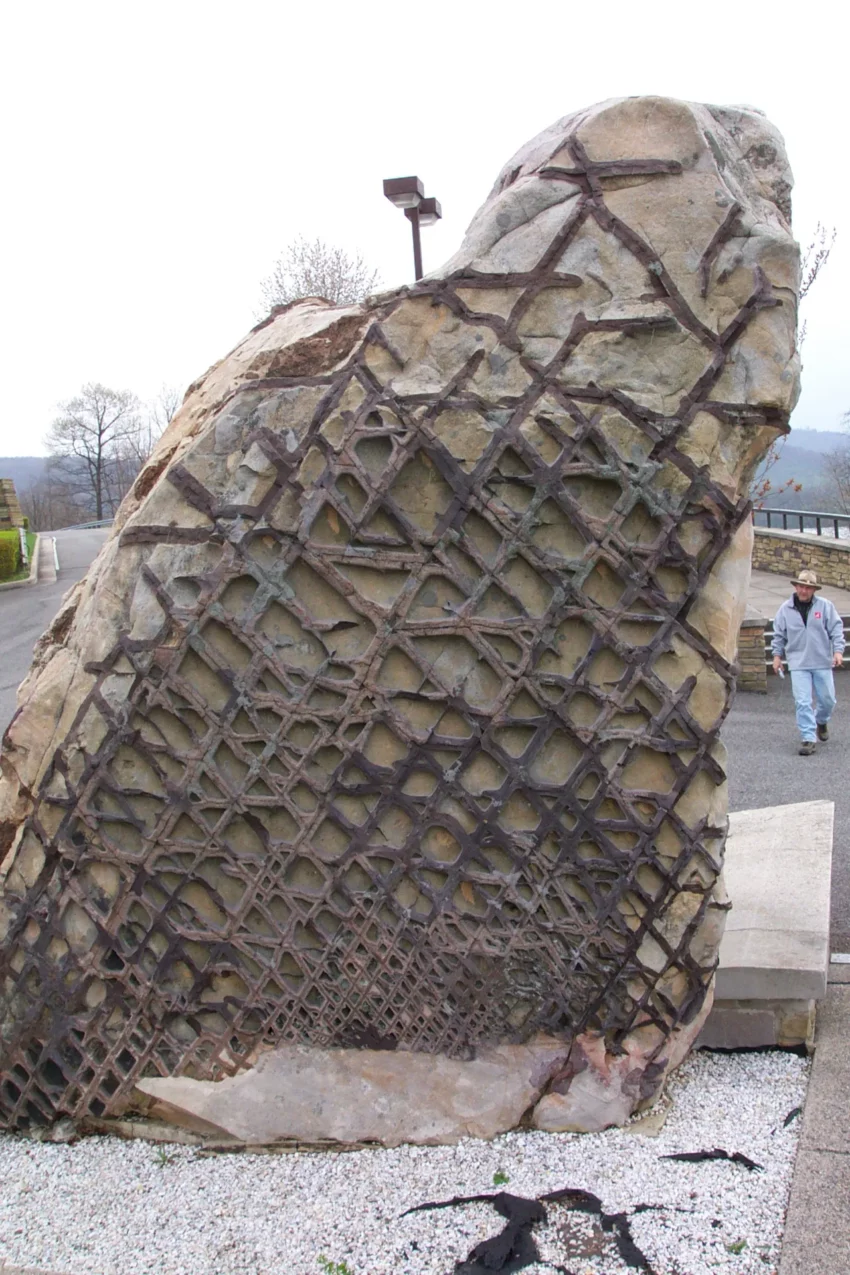Waffle Rock: A Geological Marvel in West Virginia
Located above Jennings Randolph Lake in West Virginia, Waffle Rock stands as a captivating geological wonder. Its defining characteristic? A mesmerizing waffle-like pattern etched onto its surface, sparking curiosity and igniting theories.
Get your dose of History via Email
Unveiling the Mystery: Theories Behind the Pattern
Waffle Rock has become a canvas for speculation. Some see it as a cryptic message left by extraterrestrial visitors, while others imagine it as the petrified scales of a colossal lizard. However, the most widely accepted explanation lies in the fascinating realm of geology.
A Natural Masterpiece: Geological Formation Explained
Hydrogeologist Jim Palmer sheds light on the rock’s formation. Millions of years ago, soft sandstone developed cracks. Iron-rich water seeped into these crevices, acting like a natural cement that hardened the surrounding sand particles. This hardened core, remarkably resistant to weathering, remained intact as the softer sandstone eroded away, revealing the now-iconic waffle pattern.
A Journey Through Time: Waffle Rock’s History
Waffle Rock wasn’t always a solitary wonder. It once belonged to a larger formation that eventually broke away and settled near the town of Shaw, West Virginia. Sadly, with the construction of Jennings Randolph Lake in the 1980s, Shaw became submerged. Fortunately, recognizing the rock’s significance, the U.S. Army Corps of Engineers, urged by concerned residents of Shaw, carefully relocated it to its current location – the West Virginia Overlook. Interestingly, a smaller fragment of Waffle Rock now resides at the Smithsonian Institution of Natural History.
Markings of Mystery: Debunking Speculations
The waffle pattern has fueled various theories. Some believe it’s the handiwork of Native American artists, while others envision it as the fossilized skin of a prehistoric creature. However, geologists offer a different perspective.
A Geological Timeline: Unveiling the True Story
Geologists believe the rock’s formation coincides with the Appalachian Orogeny, a period roughly 250 to 300 million years ago. During this time, immense pressure compressed the sandstone, creating fractures. Over millions of years, iron oxide filled these cracks, forming a robust cement. As the surrounding sandstone succumbed to erosion, the hardened, waffle-textured core remained, standing as a testament to Earth’s remarkable geological processes.
Conclusion: A Timeless Wonder
Waffle Rock, with its captivating pattern, continues to spark curiosity. However, by understanding the power of natural geological forces, we can appreciate this unique formation for what it truly is – a mesmerizing testament to the Earth’s dynamic history.
Sources:
Potomacriver
Ancient Origins
Image source

